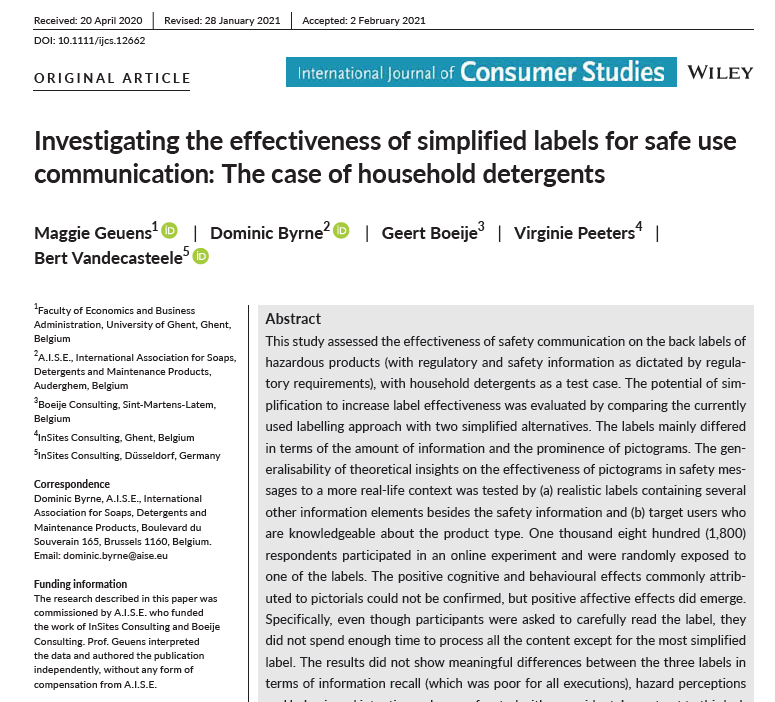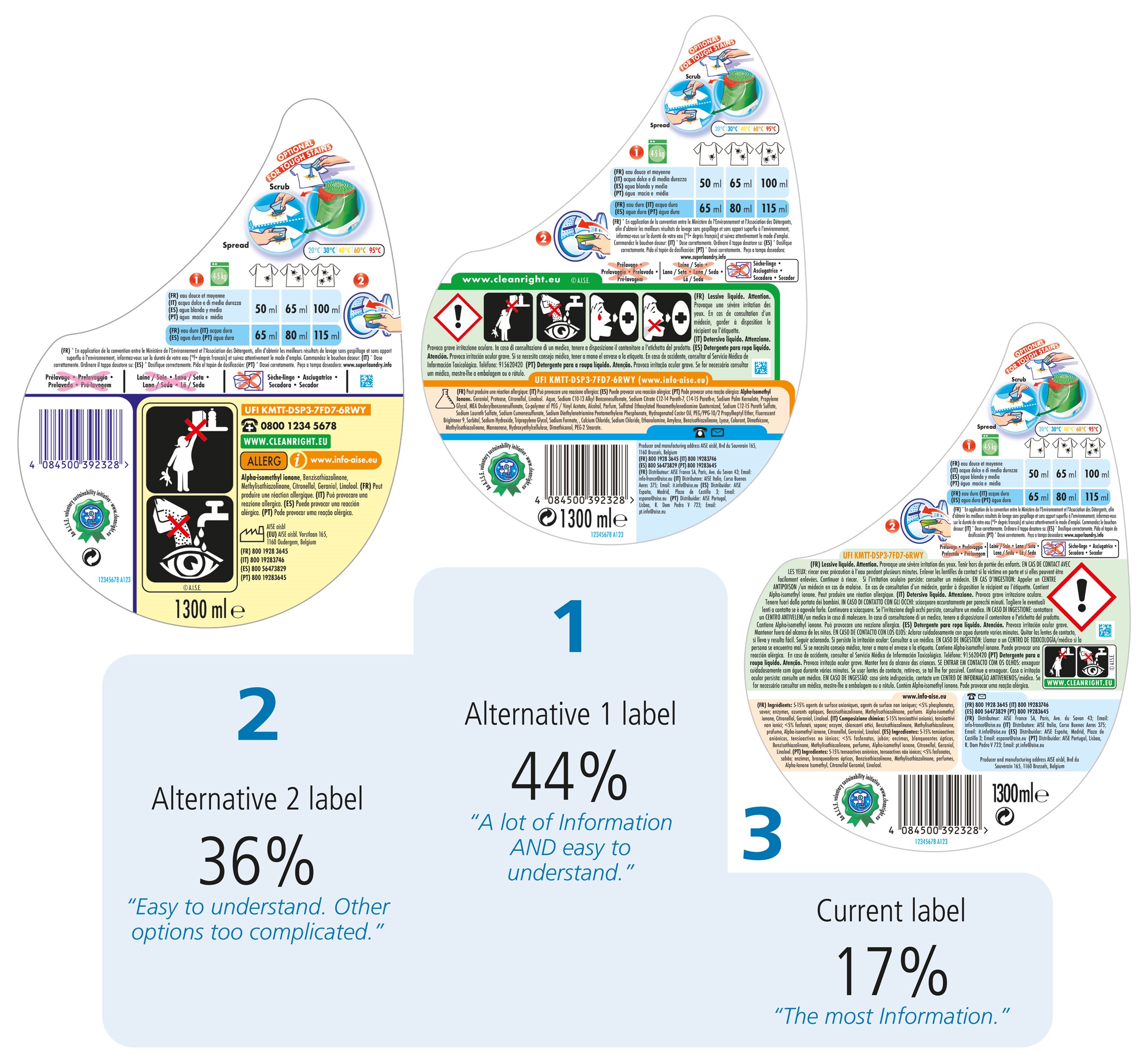 A.I.S.E.’s Better
Regulation and Safe Use ("BRES") research has been published in the International Journal of Consumer
Studies and is now
available via open access.
A.I.S.E.’s Better
Regulation and Safe Use ("BRES") research has been published in the International Journal of Consumer
Studies and is now
available via open access.
This peer-reviewed publication,
developed in conjunction with Maggie Geuens at Ghent University, Insights Consulting and A.I.S.E., reports the
background, methodology and results of A.I.S.E.’s BRES research.
In summary:
- This study sought to
evaluate the effectiveness of the current approach to hazard labelling, versus two simplified but realistic alternatives. The labels mainly differed in
terms of the amount of information and the prominence of pictograms.
- 1800 respondents participated in an online survey and were
randomly exposed to one of the labels. Respondents
were asked to take a close look at the front and the back label they were exposed
to.
- Variables that were tracked included the respondents’ cognitive responses (reading, recall and hazard perceptions),
behavioural responses (intentions after reading a scenario of a concrete incidence), affective
responses (label preference) and the time spent reading the label.
- Interestingly, this
study revealed that respondents did not spend enough time to process all the
content except for the most simplified label.
In addition, respondents expressed a clear preference for the simplified
alternative labels.
 This research demonstrates that the approach of "more
information is better” does not engage consumers. In turn, it raises questions about the
effectiveness and proportionality of this approach. Further work is needed but it is clear that a
consumer focussed approach should be considered for the safety labelling of
consumer products.
This research demonstrates that the approach of "more
information is better” does not engage consumers. In turn, it raises questions about the
effectiveness and proportionality of this approach. Further work is needed but it is clear that a
consumer focussed approach should be considered for the safety labelling of
consumer products.
For more information on A.I.S.E.'s research, download the factsheet: Better Regulation and safe use